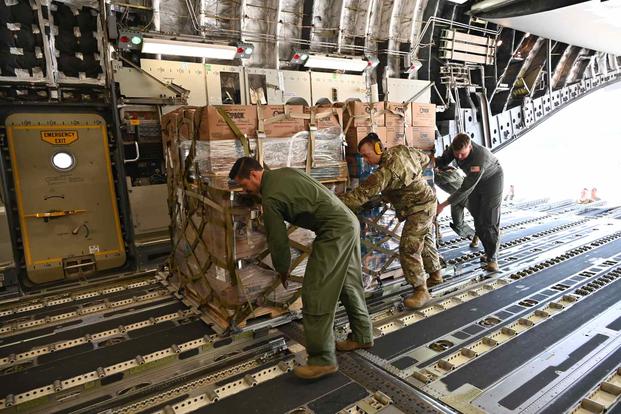The National Guard said Thursday it has fanned out across states and communities hard hit by Hurricane Helene but warned that recovery from the deadly storm will take time.
Guardsmen were assisting in opening up roadways for emergency crews, rescuing families and pets from flooding, delivering food and water, and other key tasks as the death toll from the storm climbed to more than 200, making it one of the most devastating hurricanes in recent U.S. history.
“This is a one-in-a-1,000-year storm; it’s very difficult,” Maj. Gen. Win Burkett, the National Guard Bureau’s director of operations, told reporters during a briefing Thursday. “This is going to be a long recovery process.”
Read Next: Trump Reignites Controversy over Calling Troops’ Brain Injuries ‘Headaches’
About 6,700 members of the National Guard were deployed across the Southeast on Thursday, according to the service briefing on the recovery efforts. The response since last week when Helene made landfall in the U.S. includes more than 40 aircraft and 600 vehicles from 16 states, among them Florida, Tennessee, Maryland and the Carolinas.
At least 204 people had died from the storm on Thursday, with more than half of those deaths in North Carolina due to severe flooding, according to NBC News. Hundreds were still missing, the network reported.
States as far away from the storm’s impact zone as Iowa have also sent troops for relief missions. On Wednesday, Minnesota Gov. Tim Walz, who is also the Democratic vice presidential candidate, deployed members of that state’s National Guard to North Carolina, where the lion’s share of the service component’s relief efforts are, along with Tennessee.
“We have engineers in all of our affected counties to open up at least a single lane in every road we can to allow emergency workers to get into those affected areas and respond to 911 calls,” Col. William Matheny Jr., commander of the South Carolina National Guard’s 117th Engineer Brigade, told reporters.
The bulk of the Guardsmen are on state active-duty orders, or SAD, meaning they accrue no federal benefits, including health care or disability if injured on the mission. It’s unclear when they might see federal orders.
This week, President Joe Biden authorized 1,000 active-duty troops from Fort Liberty, North Carolina, to support recovery and relief efforts. Defense Secretary Lloyd Austin mobilized the soldiers on Wednesday following a request for assistance from the Federal Emergency Management Agency, or FEMA.
The active-duty troops are part of an Infantry Battalion Task Force formed from the XVIII Airborne Corps and are from the 82nd Airborne Division, according to the Pentagon. Fort Liberty’s 82nd Airborne Division was also deployed during Hurricane Katrina in 2005.
“These soldiers are assembling and moving to the affected areas within the next 24 hours, and will join other service members from the Department of Defense who are already supporting FEMA’s response to Hurricane Helene,” Pentagon spokesman Maj. Gen. Pat Ryder said in a statement.
Deploying active-duty troops for domestic missions is relatively rare, but the damage to North Carolina has been especially devastating, with entire towns cut off from emergency crews and electricity, cell-phone towers and roadways knocked out.
The storms have also affected some key bases in the South, including Fort Eisenhower, Georgia, which has been without running water for nearly a week. Dozens of families have been evacuated.
The latest hurricane relief mission comes as the National Guard is also juggling missions abroad that include some 20,000 troops, according to data from the service component. Guardsmen are currently supporting combat operations in Africa and the Middle East, as well as bolstering NATO’s frontlines amid the war in Ukraine.
Extreme weather events such as hurricanes and wildfires are expected to become more severe and frequent due to the effects of climate change, which experts warn are already being felt in much of the country. For the National Guard, that means units spending more time deployed responding to crises in the homeland.
In 2023, National Guard units from 23 states responded to hurricane events in 13 states and territories, floods in three states, tornadoes in two states and supported mitigation and containment efforts for 53,685 wildfires.
“I think it’s very obvious that the intensity of weather patterns and the effects are certainly making a difference, and you can see it, whether it’s fires or floods or storms,” said Burkett, the National Guard Bureau’s director of operations. “Our ability to respond and help communities out will make us strong; the Guard will always have a role in that.”
Related: Georgia Army Base Struggling with Power, Potable Water After Hurricane Helene
Story Continues
Read the full article here

